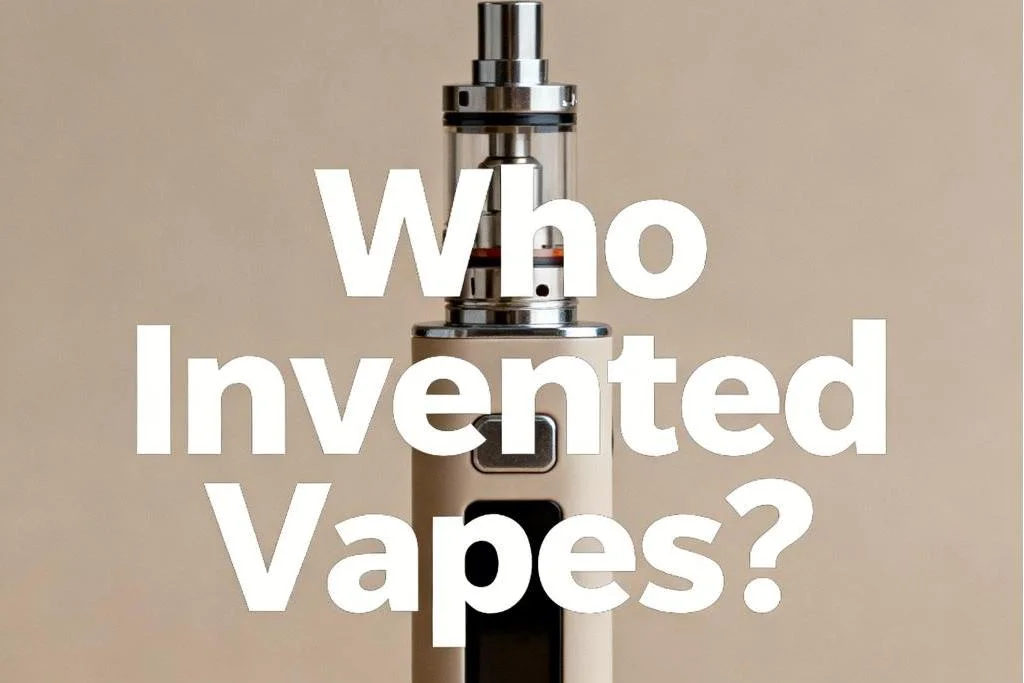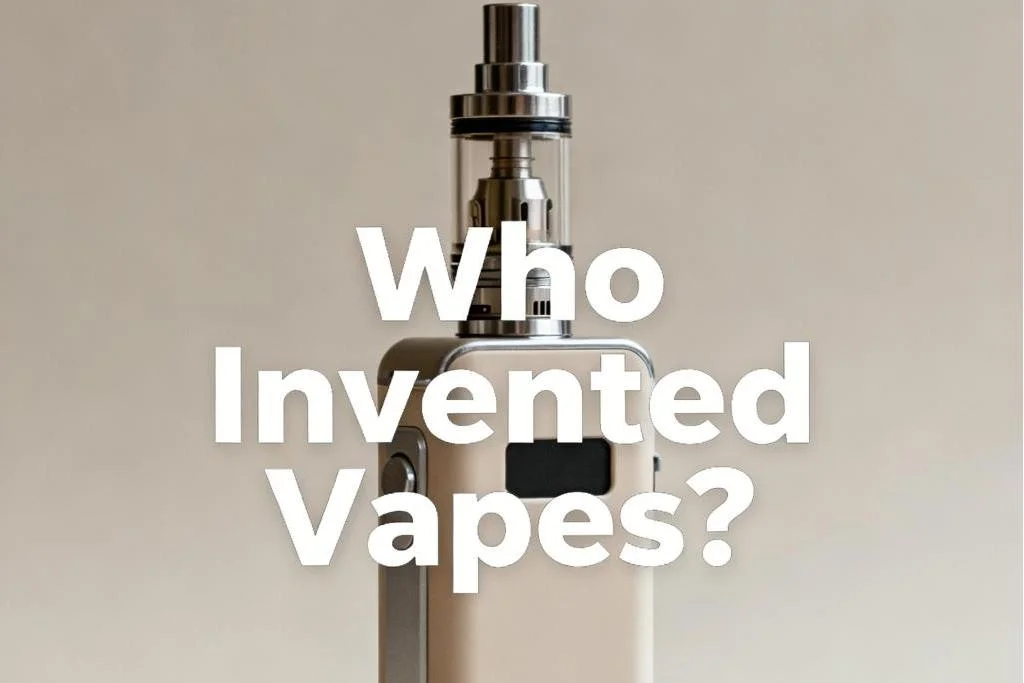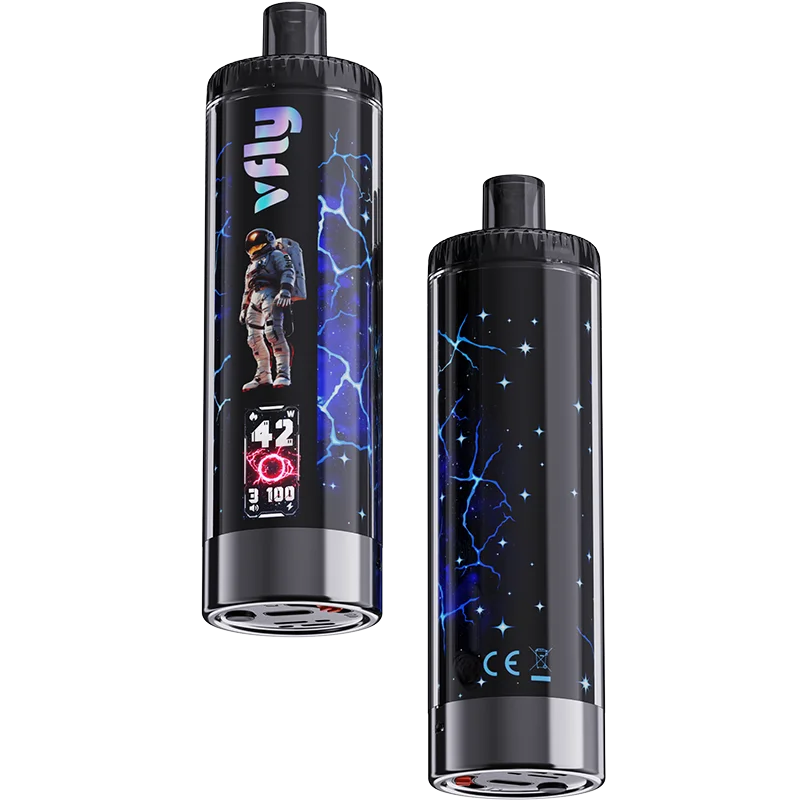Who Invented Vapes?
When it comes to vaping, one of the most common questions people search for is who invented vapes. Understanding the origin of vaping not only reveals how far the technology has come but also sheds light on how it shaped today’s global vaping culture and industry.
The Birth of the Vape Concept
The idea of inhaling nicotine vapor isn’t new. The earliest recorded concept dates back to Herbert A. Gilbert, who patented a “smokeless non-tobacco cigarette” in 1963. Gilbert’s invention was designed to replace burning tobacco with heated, flavored air. While his design included many features similar to modern e-cigarettes — such as flavored vapor and a battery-powered heating element — it never reached mass production due to the lack of technology and public interest at that time.

The Modern Vape Revolution: Hon Lik’s Invention
The true father of modern vaping is widely recognized as Hon Lik, a Chinese pharmacist and inventor. In 2003, Hon Lik developed the first commercially successful electronic cigarette after losing his father to smoking-related illness and struggling to quit smoking himself. His motivation was personal — to find a cleaner, safer way to deliver nicotine without combustion.
Hon Lik’s design used a piezoelectric ultrasound-emitting element to vaporize a nicotine-containing liquid, producing an inhalable mist. This groundbreaking device was manufactured by Golden Dragon Holdings, later renamed Ruyan, which means “like smoke” in Chinese.
Ruyan’s product quickly spread across Asia and then to Europe and North America, marking the start of the global vaping industry as we know it today.
The Evolution of Vape Technology
Since Hon Lik’s early invention, vaping technology has evolved dramatically.
- First-generation (Cig-a-likes): Designed to resemble traditional cigarettes, these were small and disposable, often with limited battery life and vapor output.
- Second-generation (Vape Pens): Larger devices with refillable tanks and rechargeable batteries, offering better flavor and vapor production.
- Third-generation (Mods and Box Mods): Introduced adjustable wattage, temperature control, and powerful batteries, allowing users to customize their vaping experience.
- Fourth-generation (Pod Systems and Disposables): Compact, user-friendly, and often prefilled with nicotine salt e-liquid, these vapes appeal to both beginners and experienced users seeking convenience.
From Niche Invention to Global Industry
What began as a single man’s solution to quit smoking has grown into a multi-billion-dollar global industry. Modern brands continually innovate — improving battery efficiency, e-liquid formulations, and safety features — while regulators around the world work to balance harm reduction with youth protection.
The vaping market now includes everything from refillable pod systems to high-performance disposables, with technology focused on cleaner vapor production, sustainable materials, and better user experience.

The Legacy of the Vape Inventor
Hon Lik’s invention has changed the landscape of nicotine consumption. While vaping remains a topic of debate among public health experts, it has undoubtedly become a significant tool for many smokers trying to transition away from traditional cigarettes.
Today, every modern vape — from sleek pod kits to advanced mods — can trace its origins back to Hon Lik’s pioneering idea. His contribution marked a turning point in how society approaches nicotine use, offering an alternative to combustion-based smoking and shaping a new culture of vaping worldwide.
Conclusion
The question of who invented vapes leads back to Hon Lik, whose personal loss inspired a global innovation. From Gilbert’s early concept to Hon Lik’s practical creation, the vape’s journey reflects human ingenuity and the ongoing pursuit of a less harmful alternative to smoking. As technology continues to advance, the legacy of these early inventors remains at the core of every puff.
FAQs
1. Who is officially credited with inventing vapes?
Hon Lik, a Chinese pharmacist, is credited with inventing the first modern e-cigarette in 2003.
2. What was the purpose behind inventing the vape?
Hon Lik developed the vape to find a safer alternative to smoking after his father died from lung cancer caused by smoking.
3. When did vaping become popular worldwide?
Vaping gained global popularity around 2007–2008, when e-cigarettes began entering the U.S. and European markets.
4. Was Herbert A. Gilbert’s invention ever used?
Although Gilbert’s 1963 design was similar to modern vapes, it was never commercialized due to limited technology and interest at the time.
5. How has vaping changed since its invention?
Vaping has evolved from simple cig-a-like devices to advanced systems with adjustable power, smart chips, and eco-friendly designs, catering to both beginners and enthusiasts.



